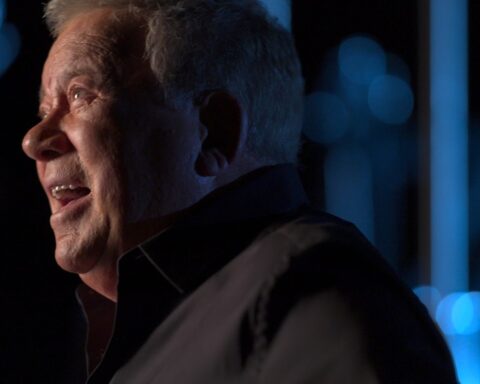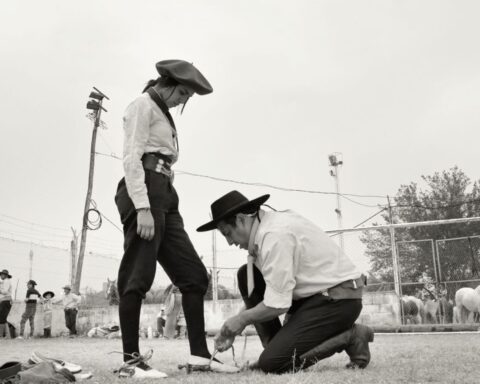What She Said: The Art of Pauline Kael
(USA, 95 min.)
Dir. Rob Garver
Most film critics can name the review that got them hooked. For me, it was Manohla Dargis’s review of A History of Violence for the New York Times. It was a marvel to read a New York based critic who completely understood the film’s decidedly Canadian sense of humour. Reading Dargis’s review was as much of a thrill as watching the film, if not more. She dug into the film, studied it within the context of its production, and celebrated David Cronenberg’s subversive elevation of a potboiler by playing upon the experience of a Canadian film masquerading as a Hollywood movie, doubling the film’s own story of a hidden life. Even if this dynamic wasn’t Cronenberg’s intent, Dargis’s insightful analysis went beyondgave the film a new persona, just as Viggo Mortensen’s Joey enjoyed a second life as Tom.
For many veteran critics, though, the words of the late Pauline Kael were their inspiration. The controversial film critic who penned barbs and made careers receives a fine appreciation in Rob Garver’s film What She Said: The Art of Pauline Kael. The film amasses an impressive collection of Kael’s film criticism, read in Carrie Bradshaw-ish voiceover by Sarah Jessica Parker. Interviews with Kael’s peers help unpack her role in cinematic history, but her work could fuel a film on its own. It’s easy to see how Kael’s highly readable prose and infectious cinephilia stimulated so many filmmakers and critics. But one can also appreciate why Kael remains a divisive figure.
The film admittedly gets off to a bumpy start with an unintelligible audio recording of a child interviewing Kael. She answers predictable questions as a springboard to a stimulating retrospective. Garver invites audiences to experience Kael’s love her movies and every bit of her passion is infectiously clear. Alternatively, when the film returns to this tinny audio for its finale and flags it as an encounter with Kael just one year before her death, one recognizes the sort of manipulatively schmaltzy move that Kael might have panned. Kael professes to love both art and trash in the documentary and it’s essential to recognize how the two forms co-exist.
What She Said charts a mostly chronological narrative of Kael’s career. She struggles, battles with editors, and finally hits her stride with The New Yorker. Kael praises films with effusive joy, loving movies for both their artistic merits and entertainment values. She embraces the high and the low, the big and small, the classic and the contemporary. She is also brutal and merciless—gleefully so. The film lets one wonder if Kael got more pleasure out of elevating films or destroying them.
Garver uses a few key reviews and moments from Kael’s career to unpack her significance. These segments illuminate why Roger Ebert once called Kael “the most powerful, loved, and hated film critic of her time.” The sequence on Bonnie and Clyde, for example, encapsulates Kael’s mastery of the rave review. The film looks at how her rapturous and incisive analysis of Bonnie and Clyde’s explosive violence was just the eye-opener America needed in the age of the Vietnam War. She almost single-handedly save the film from oblivion. Ditto Mean Streets and the career of Martin Scorsese.
What She Said conveys how Kael’s writing brought out the best in a critic as she championed new voices and talents who challenged the status quo. Similarly, she could call bullshit on widely praised works like 2001: A Space Odyssey, but do so in a way that allowed fans to understand her criticism while retaining their appreciation of the film. Garver’s film reminds audiences that best film critics allow for a diversity of opinions and invite a conversation.
The doc also unpacks a few peculiarities of Kael’s career. Her ecstatic praise for Bernardo Bertolucci’s controversial Last Tango in Paris, with its wild, steamy, and controversial sex, made the film a sensation. Fifty years later, her love for the film doesn’t sit well. What does age in Garver’s estimation, though, is Kael’s refusal to detach the critic from the cinephile. Being a critic means sitting with audiences for a film’s premiere and sending an opinion into the world whether it’s a consensus opinion or a contrarian view. Take a position and own it, the film advises the critics of tomorrow.
However, Kael’s dogged opinion could be destructively cruel. For example, Garver shares Kael’s essay “Raising Kane,”:https://www.newyorker.com/magazine/1971/02/20/raising-kane-i?verso=true which credited Orson Welles’s Citizen Kane co-writer Herman J. Mankiewicz as the brain behind the screenplay. Admirers of Welles are as brutal in their assessment of Kael as she was in her argumentation of which writer deserved the credit.
Kael could also lapse into the gravest of errors for a critic by making things personal. Garver doesn’t shy away from Kael’s unabashed love for dogging the same people. David Lean, for example, appears in an archival interview recalling a traumatic lunch with the New York Film Critics Circle. He recalls Kael breaking the convivial tone of the event to scour his entire career. Early in the film, Garver includes Kael’s review that eviscerated Lawrence of Arabia for being a movie and not a facsimile of her knowledge of T.E. Lawrence. Her brilliance and her pettiness remains a dual skill to which many of today’s critics aspire.
Similarly, her notorious takedown of Claude Lanzmann’s Shoah all but made her a pariah as she admitted that a Holocaust documentary bored her to tears. Even if one considers the old battle-axe’s Shoah review needlessly insensitive, it’s significant as the lone talking point about documentary in the film. A documentary reviewer needs to distinguish between the merits of a film and its subject matter, even if Kael might have made the point with something other than the Holocaust, or made more of an effort with the film. (And as a writer who received some brutal feedback for panning a Linda Ronstadt documentary, I can only imagine the responses Kael received!)
One must therefore follow Kael’s lead on Shoah while reviewing a film about her. What She Said might not be as great as its subject. It’s a film by cinephiles for cinephiles. Kael’s writing appears atop a scattershot collage of utterly random film clips. Few of the snippets are labelled, so audiences without a decent grasp of classic cinema will be hopelessly lost.
Garver nevertheless captures the significance of Kael’s career. What She Said unpacks the inherent misogyny in the industry as Kael struggled with editors and studios. Kael, like virtually all women in the field today, had to hone her voice while critiquing films made by men with male audiences in mind.
Love her or hate her, the doc uses Kael to prove the necessity of a brave and independent voice. Publications, filmmakers, readers, and moviegoers need honest, insightful, and intelligent voices to appraise their works. The film wonders what Kael might have made of the state of film criticism today when the publicity machine has shifted the state of film criticism with the same force with which Kael could brutalize a David Lean film.
Coming out at a time when Disney junkets overwhelm the field with superhero movie click bait, or when film festivals literally hand-pick critics, fly them to events, and put them up in Air B&Bs, Kael’s renegade spirit makes this film a must-see for anyone who values intelligent and objective discourse. Say what you will about Kael’s review of Last Tango in Paris, but she went to the New York Film Festival and bought a ticket to see it herself. Her integrity resonates in every review be it positive or negative.
What She Said gives Pauline Kael her due, but it’s arguably more necessary as a film about criticism at a time when regular paid work is hard to come by. It’s a firm reminder that film criticism and influencer marketing are not the same as modes of publication shift and the opportunities to incentivize writers harness a cinephile’s passion for the establishment’s gain. It’s a rallying cry for critics to take back the art form.
What She Said: The Art of Pauline Kael opens in Toronto at Hot Docs Ted Rogers Cinema on Jan. 17.












